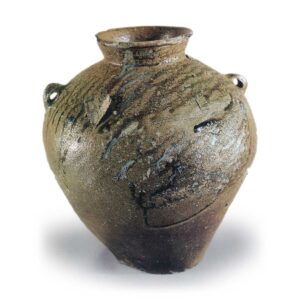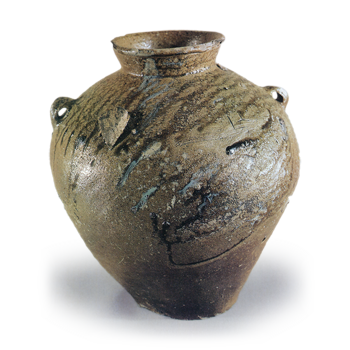
Late 15th century
Height 40.3cm, Aperture 17.0cm, Body 37.5cm, Bottom 14.8cm
Fukui Prefectural Ceramic Museum
This type of bimimi jar with two ringed ears on the shoulder is unique to Echizen and was produced from the late 15th to the 16th century. The short, outer neck is folded back to form a ball rim, and the center of gravity is still in the upper half of the body despite the sloping shoulders, indicating that this type of twin-eared jar belongs to an ancient style. The clay is grayish-white and coarse, with a few pebbles. The lower half of the body is slightly under-fired, but the upper half is well-fired. The natural glaze is applied generously from the mouth neck to the center of the body, flowing down at an angle. Furthermore, some of the glaze that flowed down the center of the body went in the opposite direction and accumulated round the end, indicating that this jar was tilted when the glaze began to melt, and fell down and turned upside down when it was fired. There is a kiln mark on the shoulder, but the lower half of the mark is not clear because it was scraped off by a horizontal nadir during shaping. In addition, there are other ceramic fragments stuck to part of the shoulder. This is a typical Echizen twin ear jar.



